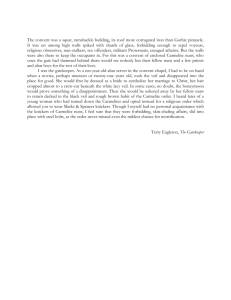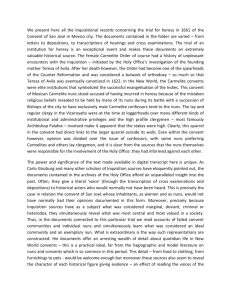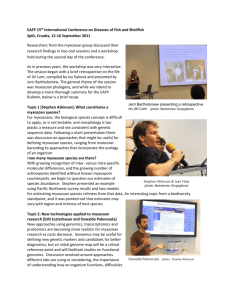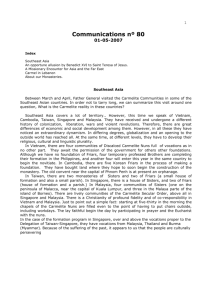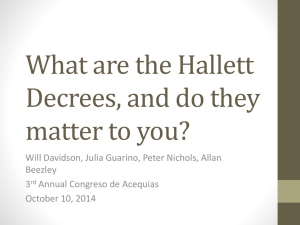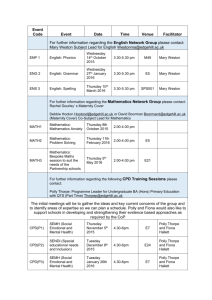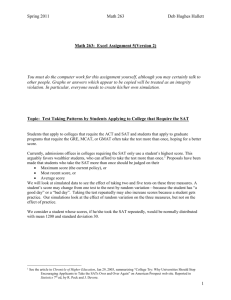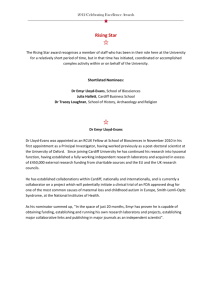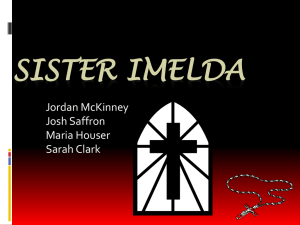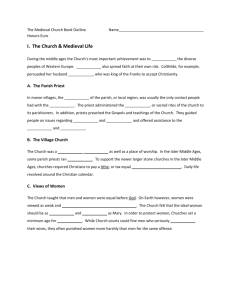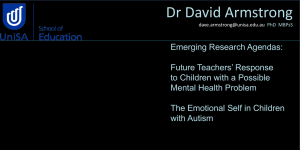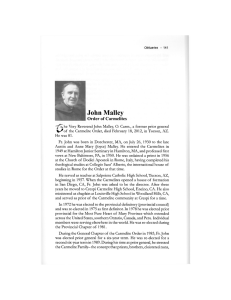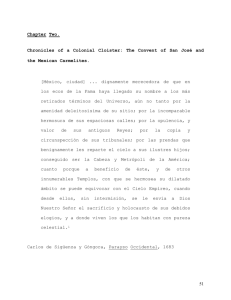Nicky Hallett, Lives of Spirit: English Carmelite Self
advertisement
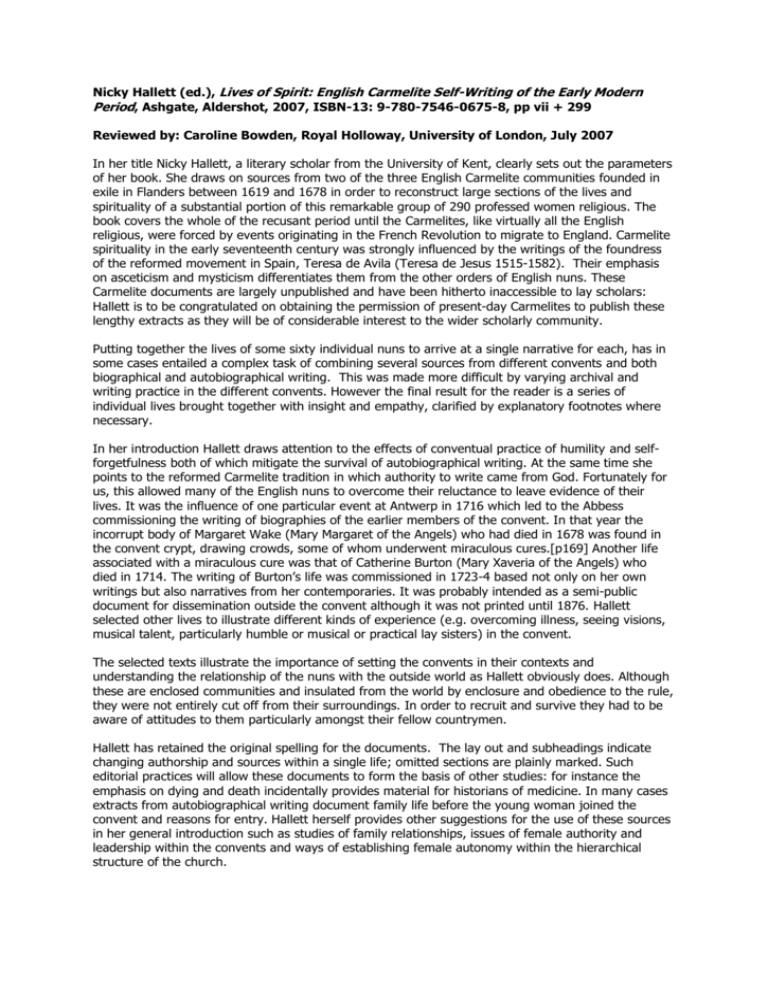
Nicky Hallett (ed.), Lives of Spirit: English Carmelite Self-Writing of the Early Modern Period, Ashgate, Aldershot, 2007, ISBN-13: 9-780-7546-0675-8, pp vii + 299 Reviewed by: Caroline Bowden, Royal Holloway, University of London, July 2007 In her title Nicky Hallett, a literary scholar from the University of Kent, clearly sets out the parameters of her book. She draws on sources from two of the three English Carmelite communities founded in exile in Flanders between 1619 and 1678 in order to reconstruct large sections of the lives and spirituality of a substantial portion of this remarkable group of 290 professed women religious. The book covers the whole of the recusant period until the Carmelites, like virtually all the English religious, were forced by events originating in the French Revolution to migrate to England. Carmelite spirituality in the early seventeenth century was strongly influenced by the writings of the foundress of the reformed movement in Spain, Teresa de Avila (Teresa de Jesus 1515-1582). Their emphasis on asceticism and mysticism differentiates them from the other orders of English nuns. These Carmelite documents are largely unpublished and have been hitherto inaccessible to lay scholars: Hallett is to be congratulated on obtaining the permission of present-day Carmelites to publish these lengthy extracts as they will be of considerable interest to the wider scholarly community. Putting together the lives of some sixty individual nuns to arrive at a single narrative for each, has in some cases entailed a complex task of combining several sources from different convents and both biographical and autobiographical writing. This was made more difficult by varying archival and writing practice in the different convents. However the final result for the reader is a series of individual lives brought together with insight and empathy, clarified by explanatory footnotes where necessary. In her introduction Hallett draws attention to the effects of conventual practice of humility and selfforgetfulness both of which mitigate the survival of autobiographical writing. At the same time she points to the reformed Carmelite tradition in which authority to write came from God. Fortunately for us, this allowed many of the English nuns to overcome their reluctance to leave evidence of their lives. It was the influence of one particular event at Antwerp in 1716 which led to the Abbess commissioning the writing of biographies of the earlier members of the convent. In that year the incorrupt body of Margaret Wake (Mary Margaret of the Angels) who had died in 1678 was found in the convent crypt, drawing crowds, some of whom underwent miraculous cures.[p169] Another life associated with a miraculous cure was that of Catherine Burton (Mary Xaveria of the Angels) who died in 1714. The writing of Burton’s life was commissioned in 1723-4 based not only on her own writings but also narratives from her contemporaries. It was probably intended as a semi-public document for dissemination outside the convent although it was not printed until 1876. Hallett selected other lives to illustrate different kinds of experience (e.g. overcoming illness, seeing visions, musical talent, particularly humble or musical or practical lay sisters) in the convent. The selected texts illustrate the importance of setting the convents in their contexts and understanding the relationship of the nuns with the outside world as Hallett obviously does. Although these are enclosed communities and insulated from the world by enclosure and obedience to the rule, they were not entirely cut off from their surroundings. In order to recruit and survive they had to be aware of attitudes to them particularly amongst their fellow countrymen. Hallett has retained the original spelling for the documents. The lay out and subheadings indicate changing authorship and sources within a single life; omitted sections are plainly marked. Such editorial practices will allow these documents to form the basis of other studies: for instance the emphasis on dying and death incidentally provides material for historians of medicine. In many cases extracts from autobiographical writing document family life before the young woman joined the convent and reasons for entry. Hallett herself provides other suggestions for the use of these sources in her general introduction such as studies of family relationships, issues of female authority and leadership within the convents and ways of establishing female autonomy within the hierarchical structure of the church. Hallett is very aware of recent literary scholarship on different forms of life writing, providing guidance with those who are perhaps less familiar with the genre and adding her own considerable skills relating to this neglected but substantial group of early modern women. In a most useful Appendix we are given extracts of the Constitutions and Rule of St Albert another text which is not easily available but which formed the bedrock of conventual life. My one regret with the book is that it could not have been longer to give us both more from the documents and more lives. We look forward to promised future volumes.
